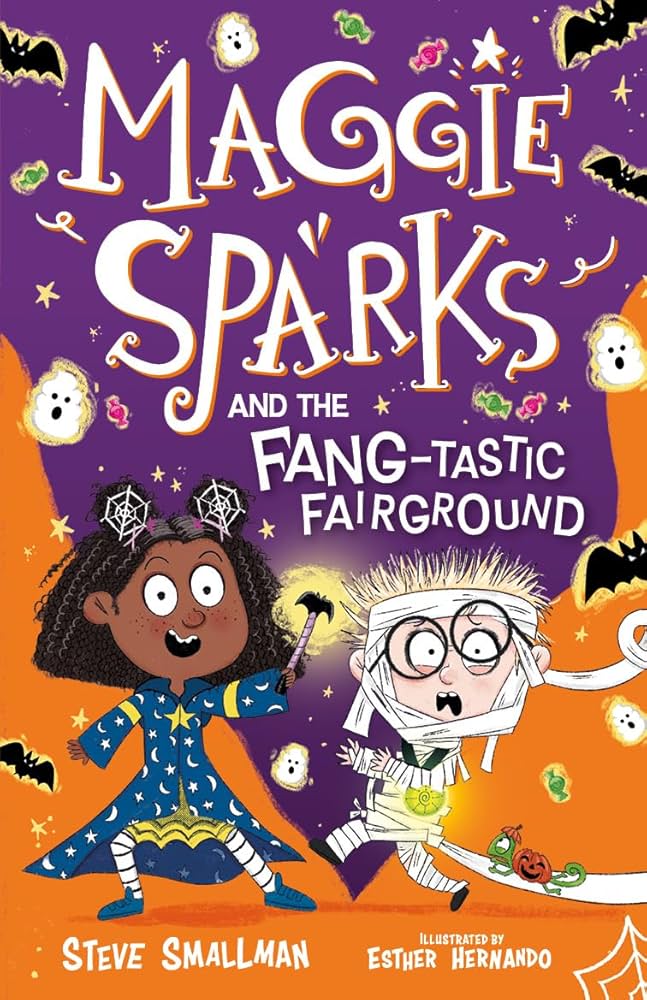Steve Smallman, author of the Maggie Sparks series, discusses why he loves writing friendships in children's fiction and the rewards and challenges of writing series fiction.

Can you tell us how you created the character of Maggie Sparks?
The publisher, Sweet Cherry, had a general idea of how they wanted Maggie to be in terms of her age, ethnicity and her tendency to get into magical mischief but as with any character you write you get to know them better as you write them. I may well have been influenced by memories of my children and grandchildren at a similar age.
Maggie and Arthur’s friendship is heart-warming and I loved how they’re both so different, yet get along so well. Why do you think friendships are such an important part of children’s fiction?
Friendships are so important to children. They form really strong bonds with each other and can be heartbroken if they fall out. The strongest friendships are the ones that are not based on whether you like the same fashion or pop star or dislike other people for whatever reason. Having shared values, being kind and caring to one other in spite of your differences is the bedrock of true friendship. Which is just as well for Maggie and Arthur who are as different as chalk and cheese!
Do you have any advice for children’s fiction writers who want to balance frights and laughs in their writing?
Even in books for very young children a bit of mild peril can really help a story along. If it’s tempered by humour it’s even better. You can build up tension with a bit of perceived danger and with a page turn, release it all again with a funny resolution. A storyline should be a bit of a rollercoaster ride but don’t leave anything too scary unresolved, we don’t want the children to have nightmares!
As Maggie Sparks is a series, how do you plan writing each book? What advice do you have for writers who are also writing series? What are the rewards/challenges?
We started the series with a very sketchy plan for what each story was about but we made a few changes as the work progressed. I personally don’t have a very well defined story plan. I kind of start writing and see where the story takes me. My first draft is often too short or too long on word count but my lovely editor Tori, is very good at suggesting where we might expand or cut the text back as needed and keep me on track. One of the great things about writing a series is that you get to know your characters really well! You discover things about them as you go along and their personalities have time to develop. You can build on the relationships you’ve introduced early on and bring back characters that have barely had a mention before to the foreground of a plot line. The downside is that you can use up a lot of ideas in the first few books and then you’ve got to try to think up a load of new ones going forward. Luckily the more you get to know your characters the more ideas they whisper in your ear!
Steve Smallman is an award-winning author and illustrator who has been illustrating children’s books for over 40 years (and writing his own stories for slightly less). He also teaches illustration workshops in schools, including mural-painting. Steve is the author of Maggie Sparks, but might also be known for writing Poo in the Zoo, and was the winner of the Sheffield Children’s Book Award 2009! When he’s not writing or drawing, Steve enjoys watching films and television, gardening and walking in the countryside.
Comments